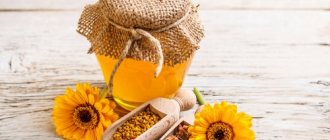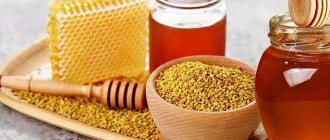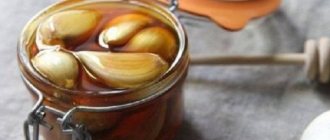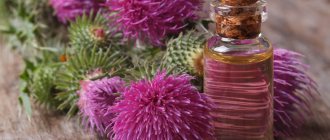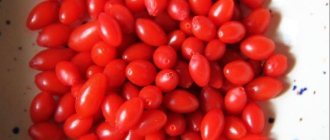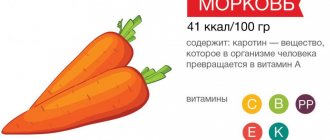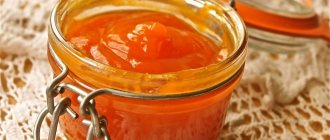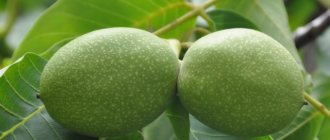Bee pollen should not be confused with other bee products such as honey, royal jelly or honeycomb. These products may not contain pollen or may contain other substances.
Recently, bee pollen has attracted increasing attention from people leading a healthy lifestyle, since it is rich in nutrients, amino acids, vitamins, lipids, and contains more than 250 active substances (1, 2).
In fact, the German Federal Ministry of Health promotes bee pollen as a medicine (3).
Many studies have examined the health effects of bee pollen and have found promising results.
Below we look at 11 scientifically proven benefits of bee pollen, its nutritional value and composition, and how to take this bee product.
Bee pollen - beneficial properties, how to take
Bee pollen contains more than 250 active substances
Bee pollen has an impressive nutrient profile.
It contains more than 250 biologically active substances, including proteins, carbohydrates, lipids, fatty acids, vitamins, minerals, enzymes and antioxidants (2).
Bee pollen granules consist of approximately (4):
- Carbohydrates: 40%
- Protein: 35%
- Water: 4-10%
- Fat: 5%
- Other substances: 5-15%
The last category includes vitamins, minerals, antibiotics and antioxidants.
However, the nutrient content of pollen depends on the plant source and the season of collection.
For example, studies have shown that bee pollen collected from pine plants has approximately 7% protein, while pollen collected from date palms contains as much as 35% protein (2).
In addition, bee pollen collected in the spring has a significantly different amino acid composition compared to pollen collected during the summer (2).
Summary:
Bee pollen contains more than 250 biological substances, including protein, carbohydrates, fats, vitamins, minerals, enzymes and antioxidants. The exact composition of nutrients depends on the plant source and the season of harvest.
How to get bee pollen? Drying, storage
Experienced beekeepers know how much of the collected pollen they can remove and dry, and what they can leave to preserve in the hives to feed the bee colony. There are special collection devices and methods - through special traps in which pollen is collected in small containers, removed and dried without direct sunlight - in a special mode with moderate temperature. Dried pollen is stored in the dark in glass containers. Canned foods are extracted and stored in the refrigerator, usually mixed with liquid honey.
Protects against free radicals and chronic diseases
Bee pollen contains a wide range of antioxidants, including flavonoids, carotenoids, quercetin, kaempferol, and glutathione (5).
Antioxidants protect your body from potentially harmful molecules called free radicals. Free radical damage is associated with the development of chronic diseases such as cancer and type 2 diabetes (6).
Test-tube and animal studies, as well as a small number of human studies, have shown that antioxidants in bee pollen may reduce chronic inflammation, eliminate harmful bacteria, fight infections, and fight the growth and spread of tumors (7).
However, the antioxidant content of bee pollen also depends on its plant sources (8).
If your bee pollen packaging does not indicate the plant source, you may have difficulty determining which flowers your bee pollen was collected from.
Summary:
Bee pollen contains high levels of antioxidants that can protect your cells from damage caused by free radicals. Free radical damage is associated with the development of chronic diseases, including cancer and type 2 diabetes.
How much and how to use?
To strengthen the body and improve health, you need to know how to take natural medicine correctly. Particular attention should be paid to how to take it for children. Unless a specialist recommends otherwise, beebread should be used as follows:
- Do not give to children under 3 years of age;
- at the age of 3-4 years, pollen – 5 g*/day;
- at the age of 5-6 years – up to 10 g/day;
- at the age of 7-15 years – up to 15 g/day;
- at the age of 16-24 years – up to 20 g/day;
- for adults – 20 g, in individual cases (especially for the elderly) – 25 g/day.*(1 tsp = 5 g).
Article for you:
Beneficial properties of honey with turmeric, improves immunity, treats flu and colds, contraindications
Recommendations on how to take pollen granules are indicated on each package. The basic principles are that it must be chewed well to crush the coating on the pollen grains. This way the body will receive more nutrients. For people with a more sensitive stomach, it is recommended to mix bee bread with yogurt, milk, cocoa, and fruit juice.
You should consume natural medicine for preventive purposes 3 times a week, after which you should take a break (1 week).
Therapeutic courses can be repeated throughout the year. In case of serious illness, it is possible to consume pollen without interruption.
In the absence of individual hypersensitivity, it has no side effects. The taste depends on the type of plant from which it is produced (flowers, fruit blossoms, etc.).
Reduces the risk of developing cardiovascular diseases
Cardiovascular disease is the leading cause of death worldwide (9).
Both high lipid levels and high blood cholesterol levels are associated with an increased risk of developing cardiovascular disease. Interestingly, bee pollen may reduce these risk factors.
For example, animal studies have shown that bee pollen extracts can lower blood cholesterol levels, especially “bad” LDL cholesterol (10, 11).
In people with myopia caused by clogged arteries, bee pollen supplements lowered blood cholesterol levels, which increased their field of vision (7).
Additionally, bee pollen antioxidants can protect lipids from oxidation. When lipids oxidize, they can clump together, clogging blood vessels and increasing the risk of heart disease (11).
Summary:
Bee pollen may help reduce risk factors for heart disease such as "bad" LDL cholesterol and lipid oxidation.
Beneficial properties of bee bread and bee pollen
The human body with all its metabolic processes is a system capable of self-regulation. A huge number of compounds are involved in metabolism, and almost all of them are synthesized in the body itself. There are substances that increase and decrease pressure, excite and calm, stimulate inflammation and suppress it.
This is true for absolutely all functions. And if some component is missing for the synthesis of active substances (hormones, enzymes, mediators), then the body’s functions suffer. For example, red blood cells “live” for 3-4 months and then are destroyed. They are replaced by others. But with iron deficiency, red blood cells cannot be fully renewed, and anemia develops.
When taking beebread and pollen, the deficiency of a large number of substances is compensated, and the functions associated with these substances are normalized. That is why these products have so many beneficial properties:
- potassium and magnesium have a positive effect on the heart muscle, have a vasodilating effect,
- Vitamin C and rutin strengthen the walls of blood vessels, making them elastic,
- iron, copper and some amino acids are involved in the synthesis of hemoglobin,
- microelements help strengthen the immune system, increase overall tone,
- fatty acids fight cholesterol, participate in the synthesis of sex hormones,
- B vitamins help normalize the functioning of the nervous system,
- enzymes are involved in improving the functioning of the gastrointestinal tract,
- carotenoids, phytohormones, organic acids have an antioxidant effect, slow down aging,
- amino acids and minerals help strengthen muscle tissue.
The list of useful properties can be continued. Sometimes there is even a statement that these beekeeping products contain all the necessary nutrients. It is close to the truth, but still not entirely true. Plants need pollen for fertilization and embryo development. Bee bread is a product that bees feed their larvae.
But human physiology differs from the physiology of insects and plants. Therefore, these products are suitable as a help – for correcting the deficiency of certain substances. But to maintain health, you should eat a varied and nutritious diet.
Boosts liver function and protects the liver from toxic substances
Your liver is a vital organ that breaks down and removes toxins from your blood.
Animal studies have shown that bee pollen can enhance its detoxifying abilities.
In older animals, bee pollen enhanced the liver's antioxidant defenses and removed more waste products such as malondialdehyde and urea from the blood (12).
Other animal studies show that bee pollen antioxidants protect the liver from damage from several toxic substances, including drug overdoses. Bee pollen also promotes liver healing (5, 13, 14).
However, the effects of bee pollen on human liver function have been poorly studied. Therefore, more research is needed to make any specific recommendations.
Summary:
Animal studies show that bee pollen can enhance liver function and protect the organ from harmful substances. However, more high-quality human studies are needed.
How to collect bee pollen in an apiary
Each bee brings up to 15 g of pollen into the hive in one flight. The total mass of pollen collected by one family is 200–300 g per day, up to 5 kg per season. The quantity and quality of pollen depends on the flowering of plants and the weather.
Bee bread is a source of protein and development for the whole family. It is eaten by builder bees, nurse bees, newly born bees, and drones. The pollen is needed to create royal jelly, which is used to feed the queen.
Beekeepers use various pollen traps to collect pollen. In the apiary, hanging wooden or plastic frames are installed in the hives. They have a grid with holes 4–5 mm in diameter. A bee must pass through the holes to enter the hive. The pollen is thrown from the baskets on the hind legs into the catcher box.
Bee pollen needs to be cleaned and dried. After collection, the pollen can be frozen to preserve all the valuable ingredients. The finished bee pollen is ground into powder in order to better mix with honey or propolis solution.
There are no identical requirements for methods of preparing pollen. It is difficult to introduce any standards for this bee product: . The composition contains hundreds of substances with various chemical properties and therapeutic effects.
Bee pollen has anti-inflammatory properties
Bee pollen has been used traditionally to reduce inflammation and swelling.
An animal study found that bee pollen extract reduced swelling of rat paws by 75% (15).
In fact, its anti-inflammatory effects have been compared to several non-steroidal anti-inflammatory drugs such as Phenylbutazone, Indomethacin, Analgin and Naproxen (7).
Bee pollen contains several compounds that can reduce inflammation and swelling, including the antioxidant quercetin, which reduces the production of inflammatory omega-6 fatty acids such as arachidonic acid (16).
Moreover, plant compounds in bee pollen may inhibit biological processes that stimulate the production of inflammatory hormones such as tumor necrosis factor (TNF) (17).
Summary:
Antioxidants in bee pollen may have powerful anti-inflammatory properties, according to animal and test-tube studies.
Pollen in the composition of a flower, pollen and beebread
The tips of the flower stamens are equipped with extensions in the form of sacs. This collection of pollen usually comes in a variety of shades, ranging from white and golden yellow to green and brown. Microscopic grains contain sperm, which are used for the process of fertilization of ovules in the ovary of flowers. After fertilization, the formation of seeds and fruits of plants begins.
Bees collect pollen in the spring and throughout the summer. The insect lands on a flower, touches the anthers with its mouthparts, paws and abdomen. The pollen sacs on the stamens burst, releasing light pollen onto the bee's body and its numerous hairs. With its paws, the insect knocks lumps off the chest, head and abdomen, moistens them with nectar from the honey crop and attaches them to special basket-shaped depressions on the hind legs.
This is how pollen is formed - pollen from various plants, moistened with nectar, flavored with bee enzymes. Hardworking insects provide this strategic resource for the whole family. The bees collect pollen from flowers and place them in honeycombs. Then they compact it and pour honey on top. It turns out bee bread or bee bread. Pollen and pollen are often called bee pollen.
Compound:
- carbohydrates (starch, monosaccharides) - from 50 to 60%;
- proteins and amino acids - from 30 to 40%;
- fatty acids - from 2 to 3%;
- vitamins and minerals - from 3 to 5%.
Strengthens the immune system and kills bacteria
Bee pollen can boost your immune system, helping you avoid illnesses and unwanted reactions.
First, research has shown that it can reduce the severity of allergy symptoms.
One study found that bee pollen significantly reduced mast cell activation. Mast cells, when activated, release chemicals that cause an allergic reaction (18).
Additionally, several test tube studies have confirmed that bee pollen has strong antimicrobial properties.
Bee pollen extract has been found to kill potentially harmful bacteria such as E. coli, salmonella, Pseudomonas aeruginosa, and those that cause staph infections (19, 20).
Summary:
Animal and test-tube studies show that bee pollen's antioxidants may reduce the severity of allergy symptoms and inhibit several harmful bacteria.
Side effects and harm, allergies, contraindications
Apart from the many positive qualities of bee pollen, we should also point out some side effects and contraindications. We will immediately note that bee pollen should be started with very small doses because, although rare, the product can cause allergic reactions, and in addition, not every body is able to cope with the countless positive effects of bee pollen for one reason or another. It is best to consult a specialist before starting treatment or prevention!
Here are the diagnoses and groups of patients for whom bee pollen is contraindicated or not recommended:
- Patients at the third or fourth stage of cancer; admission is permitted after individual consultation with a specialist;
- Uterine fibroids - in this case, the specialist must make a decision about the possible benefits or negative effects of a particular patient;
- Autoimmune diseases - a special analysis is required to determine the acceptability of this therapy; there is a risk, for example, in the case of Graves' disease, since pollen stimulates the immune system, and the disease is associated with overactivity of the immune system;
- Insomnia, increased excitability - in such conditions, pollen should not be taken in the evening;
- Individual intolerance: we repeat once again the warning about possible allergic reactions. If such symptoms occur at the initial dose of minimal doses, no further investigation should be undertaken. There are cases where consuming pollen has a negative effect on the liver, even if hepatitis develops - so you should not overlook consulting your doctor before taking pollen.
Those patients who are treated with strong medications are also at risk - they are not recommended to add bee pollen to them.
Bee pollen helps heal wounds and prevent infections
Bee pollen has anti-inflammatory and antioxidant properties that can help your body heal wounds.
For example, animal studies showed that bee pollen extract was as effective in treating burn wounds as silver sulfadiazine (the gold standard in burn treatment) and caused far fewer side effects (21).
Another animal study found that applying a balm containing bee pollen to a burn significantly accelerated healing compared to standard medications (22).
The antimicrobial properties of bee pollen may also prevent infections, a major risk factor that can compromise the healing process of scrapes, cuts, abrasions, and burns (21).
Summary:
Bee pollen has anti-inflammatory and antioxidant properties that may promote wound healing. Its antimicrobial properties may also prevent wound infections.
Compound
If we talk about its composition, it is worth noting the following features:
- The healing properties of bee pollen are due to macro- and microelements. Calcium, selenium, magnesium, phosphorus, iron, sodium, zinc, and manganese are presented here in maximum quantities.
- These are the vitamins that predominate in the biochemical composition: A, E, D, B1, B6, B2, C.
- There are also final plant pigments here.
- Essential amino acids are present, and there are up to 23% of them here.
- The amount of fatty acids from the total mass is 5%.
- Plant hormones also have the most beneficial effects on the human body.
And some other components - fructose, glucose, carbohydrates.
But it is worth considering that pollen is collected from different plants, so it may differ slightly in biochemical composition and beneficial properties.
May have anti-cancer properties
Bee pollen may have uses in the treatment and prevention of cancer, which develops as a result of abnormal proliferation of body cells.
Test-tube studies found that bee pollen extract inhibited tumor growth and stimulated apoptosis (programmed cell death) in prostate, colon, and leukemia cancers (23, 24).
Bee pollen derived from cistus (Cistus incanus L.) and white willow (Salix alba L.) may have antiestrogenic properties, which may reduce the risk of breast, prostate, and uterine cancer (25, 26).
However, human studies are needed.
Summary:
Test-tube studies suggest bee pollen reduces the risk of several types of cancer, although human studies are needed.
Chemical composition of the product
If you believe the scientists who were engaged in biological research of this substance, then it contains almost 250 useful substances - vitamins, microelements, fats, organic compounds, and so on. It turned out to be impossible to determine the exact composition of flower pollen in practice due to the fact that it is fickle, can change and depends on where it was collected, from what flowers or trees, and even on whether it was raining outside at that time . But we can say for sure that this product consists of a large number of vitamins that belong to group B (pyridoxine, thiamine, and so on), and these are the substances that are catalysts for almost two dozen chemical reactions that occur every second in the human body.
You can always buy bee pollen in Ukraine from us, at the family apiary 'Vesely Hornet' by phone:
+380984298830 +380955638797
They improve brain activity, activate the work and restoration of neurons, improve the immune system, and also catalyze at least two types of metabolism - protein and carbohydrate
. It is thanks to the high content of B vitamins that the use of pollen for children is considered especially useful, because the child’s body, like no other, needs to be recharged with these vitamins, because they can improve their appetite (and it is very difficult to get children to eat normally), normalize sleep patterns and prevent the development of anemia, which sometimes occurs due to an unbalanced diet.
In addition, pollen grains also contain carotenoids (it is because of them that they have a yellow tint) - provitamins A and C (the body uses carotenoids as a raw material component to produce those components that it needs). They improve the condition of the liver and also protect cells from malignant degeneration (that is, regular use of pollen helps to avoid the development of oncology)
. Moreover, these substances (according to one study from Harvard University) reduce the risk of developing ischemia by 50%, which is very relevant in modern times.
Pollen grains also contain many protein components and amino acid residues, which are involved in the regeneration and formation of new cells, improve the protective functions of internal organs
. Proteins perform construction functions and are used by the brain to produce energy, so you should not neglect the consumption of foods that contain them. Well, we can’t help but talk about the rich polymineral composition of this product, since it includes magnesium, selenium, zinc, iron, chromium and other minerals, which together improve the functioning and condition of the entire body, normalize blood composition and prevent the development of chronic diseases.
So taking pollen helps not only treat diseases, but also prevent their occurrence. Its effect becomes especially noticeable when taken regularly by older people, whose body begins to slowly lose ground - pain appears behind the sternum, weakness, mood disappears and something “new” hurts every day.
Gerontologists (people who deal with age-related health problems) were able to prove that daily intake of this remedy (although the studies were conducted using bee pollen, its difference from pollen will be described below) helps to reduce the risk of developing all “age-related” diseases by 50% ( osteochondrosis, heart disease, atherosclerosis and so on)
. The main thing is to know the rules of how to properly take pollen, because half of the result obtained depends on the dose of its intake and even the time.
What is the difference between bee pollen and flower pollen?
As you know, there are two products in the world based on bee pollen, and they are both created by nature. A person collects the first product at the moment when plants begin to bloom, and the second product is collected by bees and brought to their hive in order to preserve it (turn it into bee bread or bee bread) and use it to feed young individuals.
Many people do not understand the difference between flower pollen and bee pollen, and these gaps in education need to be filled, because these substances, although very similar to each other in composition, still differ in their healing properties. Bee pollen is the name given to pollen grains that bees collect from flowers, moisten them with salivary enzymes, and then use them for food. So, the benefits of pollen, which is processed with salivary enzymes, are many times greater than the benefits of the product that a person collects on his own. In addition, many people suffer from pollen allergies (hay fever), so they cannot afford to consume this product, and bee pollen does not contain allergens, so it is not dangerous for either adults or children.
Also, reviews of pollen provide information that it is most often sold in the form of capsules coated with a gelatin shell. And even though gelatin is considered a fairly safe substance, it is still not completely absorbed by organisms and is excreted through the liver, which in itself contradicts the main principles of traditional (alternative) medicine.
May relieve menopausal symptoms (hot flashes)
Menopause, which marks the cessation of menstruation in women, is often accompanied by uncomfortable symptoms such as hot flashes, night sweats, mood changes, and sleep disturbances (27).
Research shows that bee pollen can relieve several menopause symptoms.
In one study, 71% of women felt their menopausal symptoms were reduced after taking bee pollen (27).
In another study, 65% of women who took a bee pollen supplement experienced fewer hot flashes. These women also reported other health improvements, such as better sleep, decreased irritability, reduced joint pain, and improved mood and energy levels (28).
What's more, a three-month study found that women taking bee pollen supplements experienced significantly fewer menopausal symptoms. Additionally, these supplements helped lower levels of “bad” LDL cholesterol and increase levels of “good” HDL cholesterol (29).
Summary:
Research has shown that bee pollen can relieve several menopausal symptoms, including hot flashes. It may also improve cholesterol levels.
Bee pollen: pros and cons
We have already figured out bee pollen, medicinal properties, how to take this gift of nature, but will it always be useful? Reviews on the Internet about the use of pollen for the treatment and prevention of diseases are mostly positive, less often neutral; there are practically no negative reviews. There is generally a lot of information on the Internet on the topic: Bee pollen: benefits and harms, how to take it, reviews. But what does traditional medicine think about this? Are there any contraindications for taking pollen and can it harm human health? Bee pollen is a powerful allergen, so first of all, allergy sufferers should treat it with caution. Ideally, before starting to take pollen, you should consult with an allergist and undergo an allergic reaction test, or at least start taking it with minimal doses, gradually increasing them, observing the body's reaction and stop taking it at the first sign of an allergy. In addition, diabetics and patients with blood clotting disorders have a taboo on pollen.
Bee pollen, the properties of which we discussed at the beginning, will not lose them only if stored correctly. Spoiled pollen turns into real poison.
To summarize the above, answering the question “how to take bee pollen?” I would like to highlight a few basic rules for safe treatment with pollen:
1. Compliance with the norm of pollen consumption (5 mg/day) 2. Consumption of pollen as part of “vitamin cocktails” 3. strict adherence to storage standards and expiration dates 4. Compliance with treatment periods. The course of treatment is about 1 month. Further use is possible only after consultation with a doctor. 5. Pollen is contraindicated for diabetics 6. Allergy sufferers should take special care 7. You can buy bee pollen at any pharmacy.
May improve nutrient utilization, metabolism and prolong life
Some evidence suggests that bee pollen may improve your body's use of nutrients.
For example, iron-deficient rats absorbed 66% more iron when bee pollen was added to their diet. This spike is likely due to the fact that pollen contains vitamin C and bioflavonoids, which improve iron absorption (30).
In addition, healthy rats fed pollen absorbed more calcium and phosphorus from their food. Bee pollen contains high-quality proteins and amino acids that may promote such absorption (30).
Other animal studies have shown that bee pollen can improve muscle growth, speed up metabolism, and prolong life (3, 31).
Although animal studies are promising, it is unclear whether this bee product has the same effects in humans.
Summary:
Animal studies have shown that bee pollen can improve the absorption and utilization of nutrients such as iron, calcium and phosphorus. Taking it may also speed up metabolism and promote longevity, although human studies are needed to confirm these effects.
Medicinal properties
Bee bread is a “superfood” with a high content of enzymes and proteins. They predetermine the benefits (no great harm does not count) of flower pollen.
Vitality, Vitality and Immunity Boost Beebread is an excellent natural source of energy due to the presence of a wide range of nutrients.
The carbohydrates, proteins and vitamins contained in the bee product provide sufficient energy throughout the day. The anti-stress effect helps eliminate fatigue or improve endurance. Bee bread nourishes the adrenal glands, helping relieve adrenaline fatigue.
The vitamin and mineral complex contained in the product is a good helper in strengthening the body's defenses. The natural remedy helps improve digestive health and increase the activity of good intestinal bacteria, which underlie the body's strong defenses.
It has antibiotic-like properties that help the body defend against viruses, and is also high in antioxidants that protect cells from oxidation caused by free radicals.
How to take pollen to strengthen the immune system? 4 tsp is enough. per day - for adults and 1 tsp. - for children.
Digestive Diseases Natural medicine, in addition to essential vitamins, minerals and proteins, contains enzymes that aid digestion and help the body digest and absorb nutrients from food.
The medicinal effects of the bee product have a beneficial effect on inflammatory processes in the intestines, which also helps improve digestion.
How to use the product for certain diseases?
- for gastritis with low acidity, it is recommended to take 1 tsp. per day, diluted in cool water;
- for gastritis with high acidity, the dosage is similar, but it must be diluted in warm water and taken either half an hour before meals, or 2-3 hours after;
- for colitis, the most effective mixture is bee bread and honey (1:1), dose – 1 tsp. 3 times a day (read about other treatment methods);
- for cholecystitis, take 1 tsp. 3 times a day, course – 3 weeks;
- for constipation 1 tsp. can be mixed in yogurt and taken 3 times a day, course – 3 weeks.
Pressure Using pollen normalizes blood pressure - helps with both hypertension and hypotension. Recommended dosage – 3-4 tsp. in a day. Course – 1 month, duration – 1 week.
Liver diseases For liver diseases, beneficial effects are observed when taking beebread in combination with honey or royal jelly (1:1). Reception – 4 tsp. in a day. Course – 1 month, break – 1 week. It is good to combine this treatment with taking choleretic teas.
Kidney diseases Kidney diseases can be cured by using pollen with honey (1:1). The mixture should be sucked like a lollipop. Reception – 1 tsp. 3 times a day. Course – 1 month. It is advisable to combine treatment with horsetail infusion.
Article for you:
Useful properties and contraindications of honey with propolis, use in folk medicine and cosmetology
Prostatitis Positive effects are observed with inflammation and enlargement of the prostate (prostatitis). To treat the disease, it is recommended to take 2 tsp. beebread per day; The product can be dissolved in water or mixed with honey.
Note! Despite all the benefits of bee bread for men, if you have prostate adenoma, it should be taken with caution and only after consulting your doctor!
Atherosclerosis Natural medicine has the ability to strengthen blood vessels and reduce cholesterol levels, thereby preventing the development and helping to treat atherosclerosis. For a positive effect, take 3-4 tsp. per day.
Weight loss Despite the fact that this beekeeping product is used mainly for weight gain, it can be used to get rid of fat deposits. In this regard, it is important to know how to drink the product and not exceed the recommended dosage, which is:
- the first 3-4 days – 1 tsp;
- subsequent days - 2 tsp. (in the absence of negative effects).
The dietary course lasts 1 month. During this time, to effectively lose weight, you must follow a diet based on a balanced diet.
Fatigue and apathy Pollen has similar properties and effects on the human psyche as royal jelly - it has a beneficial effect on the body's metabolism and has rejuvenating properties, helps overcome constant fatigue (chronic fatigue syndrome) and will help treat neuroses.
To support the nervous system and vitality, a combination of bee bread with honey and royal jelly (1:1 or 1:2) is recommended. The mixtures are taken in 3-4 tsp doses. per day.
Cough For coughs, it is recommended to take pollen with honey (1:1) or dissolved in warm water (1 tsp per 250 ml of water), 3 times a day. The active component that combats this unpleasant symptom is vitamin P.
Menopause For women suffering from problems associated with menopause, it is advisable to use bee bread mixed with honey (1:3) daily.
Skin and hair health In addition to its positive effects on health, beebread is also used in cosmetology. It can be added to any face mask - this will help improve skin health. Applying to damp hair before washing (for 10 minutes) 1-2 times a week will prevent and stop hair loss.
Safe for most people and easy to add to your diet
Bee pollen is sold as granules or supplements (capsules, tablets) and is safe for most people.
You can purchase it from health stores, online, or from your local beekeeper.
The granules can be added to your favorite meals such as breakfast or smoothies.
However, people with allergies to pollen or bee stings should avoid taking bee pollen, as it may cause symptoms such as itching, swelling, shortness of breath, or anaphylaxis (32).
It may also interact with blood thinners such as warfarin (33, 34).
Pregnant or breastfeeding women should avoid bee pollen as there is no evidence that it is completely safe for babies.
Summary:
Bee pollen supplements are generally safe. However, people with allergies to pollen or bee stings, pregnant or breastfeeding women, and people taking anticoagulants such as warfarin should avoid it.
Methods of using pollen grains
Talking about how to use pollen, it must be said that there are two main ways to take it:
- in natural form - granules or powder;
- mixed with honey or other substances.
When consumed in its natural form, it is necessary to remember that each grain of this product is covered with a shell, so it is advisable to process it before it enters the stomach. How? You can dissolve a small amount of this product in a glass of boiled water (it will not dissolve completely, but the shell will soften, which will improve its bioavailability) or hold it in your mouth for a while so that salivary enzymes act on it. The second method is unpleasant, but correct and is not suitable for everyone, because the grains have a slightly bitter taste and swallowing them is not so pleasant. Therefore, before starting to take the pollen, it would be more correct to first mix it with liquid honey, and then take it on an empty stomach for 30 minutes before meals, dissolving in the mouth.
Few people prepare mixtures of this product, because the mixture of pollen product and honey, although it has strong healing properties, looks very unappetizing in appearance. Some advise mixing a small amount of this substance with butter and spreading it on bread or simply dissolving it in your mouth, but beekeepers say that the most benefits can be obtained from taking this product in its pure form.
How to take bee pollen
Before taking bee pollen supplements or consuming bee pollen to treat any medical condition, you should consult your physician.
Your doctor can give you information about other drug treatments to treat your condition or problem.
It may also suggest lifestyle or dietary changes that may be more effective than supplements. If you have allergies or any blood or liver conditions, bee pollen may not be safe for you. Your doctor can tell you if this is the case (35).
Start with a small dose
If you decide to take bee pollen, you should start with a small dose to make sure you don't have an adverse reaction.
You may increase your dose gradually to make sure this product is safe for you. Start with 1/8 teaspoon per day, gradually increasing the dose to 6 teaspoons per day.
Ways to take bee pollen
Ground bee pollen can be mixed with honey, cottage cheese or yogurt in a ratio of 1:1 to 1:4.
If you are trying to combat nutritional deficiencies, allergies, inflammation, stress or illness, take one teaspoon of bee pollen mixed with other foods three times daily.
Bee pollen granules are also available. They can be added to yogurt, cereals and baked goods.
The granules can be ground using a coffee grinder and added to smoothies or sprinkled on salads.
The granules can be soaked in warm water for two to three hours. This releases all the beneficial nutrients. They can also be added to milk, fruit and vegetable juices.
After soaking, you can drink the liquid or add it to a smoothie to reap all the benefits of bee pollen.
Bee Pollen Recipes
Traditional medicine recommends a number of proven recipes with bee pollen; preparing doses is not difficult and the product can be easily obtained at the beekeeping market or at health food stores and stands. It is important to be patient and consistent in implementing a certain regimen and follow the doses recommended by the apitherapist.
Bee pollen with honey
Is it possible to mix bee pollen with honey? Every specialist will tell you that it is not only possible, it is even advisable if honey is not contraindicated! Pollen and honey are usually mixed in a 1:2 ratio, i.e. one piece of pollen and two pieces of honey. As we already mentioned, to strengthen the immune system and colds, this mixture can be taken three times a day, a teaspoon on an empty stomach.
The combination of pollen and honey is also beneficial for anemia. To do this, we mix 50 g of pollen and 200 g of honey; add 200 ml of warm boiled water and stir until a homogeneous liquid is obtained. We leave this healing drink for 48 hours. Then drink 100 ml three times a day, an hour before meals.
With royal jelly
The combination of bee pollen and royal jelly stimulates and strengthens the immune system. We can prepare a mixture of one gram of royal jelly, 15 grams of bee pollen and 2/3 cups of pure honey. The mixture is stored in a dark glass jar in the refrigerator. Just one teaspoon is taken daily for a month.
Pollen with yogurt
To support the immune system, we can also make the following bee pollen in yogurt mixture:
Mix a tablespoon of bee pollen and honey in a glass of yogurt. Add 30-40 drops of cleansing tincture. This mixture is a 24-hour dose: we eat a spoonful throughout the day.
The combination of pollen and yogurt also helps against cellulite, here's how to do it:
We mix a small spoonful of pollen in a glass of yogurt. Leave in the refrigerator overnight; In the morning we have breakfast with the mixture. We immediately prepare the same dose for the evening - we eat half an hour before the last meal of the day. A significant reduction in cellulite can be expected in two months if we maintain this regimen on a regular basis.
Summarize
- Bee pollen contains many vitamins, minerals and antioxidants, making it incredibly healthy.
- Research shows that bee pollen has a number of benefits, such as reducing inflammation, strengthening the immune system, relieving menopausal symptoms and healing wounds.
- However, most of the evidence regarding this bee product and its components comes from test tube and animal studies. Human studies are needed to determine the health benefits of bee pollen.
- Bee pollen is a great addition to your diet and can be easily purchased from health stores, online retailers, or your local beekeeper.
Bee products, Bee pollen
What does it cure?
Regular use of natural medicine is especially suitable for children and people living in stressful areas of cities and areas with frequent weather changes. The beneficial properties of flower pollen will also save you from civilizational diseases (how to take it depends on the specific problem). The product can be used in the following cases:
- as a general nutritional resource when vitality decreases;
- as an aid in rehabilitation after illnesses and operations;
- anemia (anemia) due to iron deficiency;
- Crohn's disease, ulcerative colitis, procytocoitis and other inflammatory bowel diseases;
- chronic constipation;
- chronic diarrhea;
- mental anorexia and malnutrition, in general;
- illnesses from radiation;
- nail diseases;
- hair loss;
- cracking and increased permeability of vascular walls;
- liver dysfunction – with jaundice, cirrhosis, fatty liver;
- seborrhea (increased sebum production) and other skin diseases;
- the product acts as a blood pressure harmonizer (high - reduces, low - increases);
- viral diseases of the upper respiratory tract, influenza, etc.;
- blood purification and regeneration, including cholesterol degradation;
- positive effect on the psyche - people who use pollen are more balanced, calm, optimistic, and cope better with stressful situations;
- pollen with honey improves the quality of night sleep.
Article for you:
Masks with honey for hair: a selection of the most effective and affordable recipes
Pollen contraindications
When taken correctly, pollen is safe. But there are cases when it is not recommended.
For allergies
Especially for bee stings. Bee pollen can cause swelling, shortness of breath and itching. In rare cases, anaphylactic shock. Talk to your doctor before adding to your diet.
During pregnancy and breastfeeding
Gynecologists do not recommend pollen for pregnant women due to its high content of vitamins and nutrients. It is unknown how they will affect the course of pregnancy. Breastfeeding mothers are at risk of developing allergies in their children.
While taking medications
If you are taking medications, especially blood thinners such as Warfarin, or taking herbal remedies, consult your doctor.
